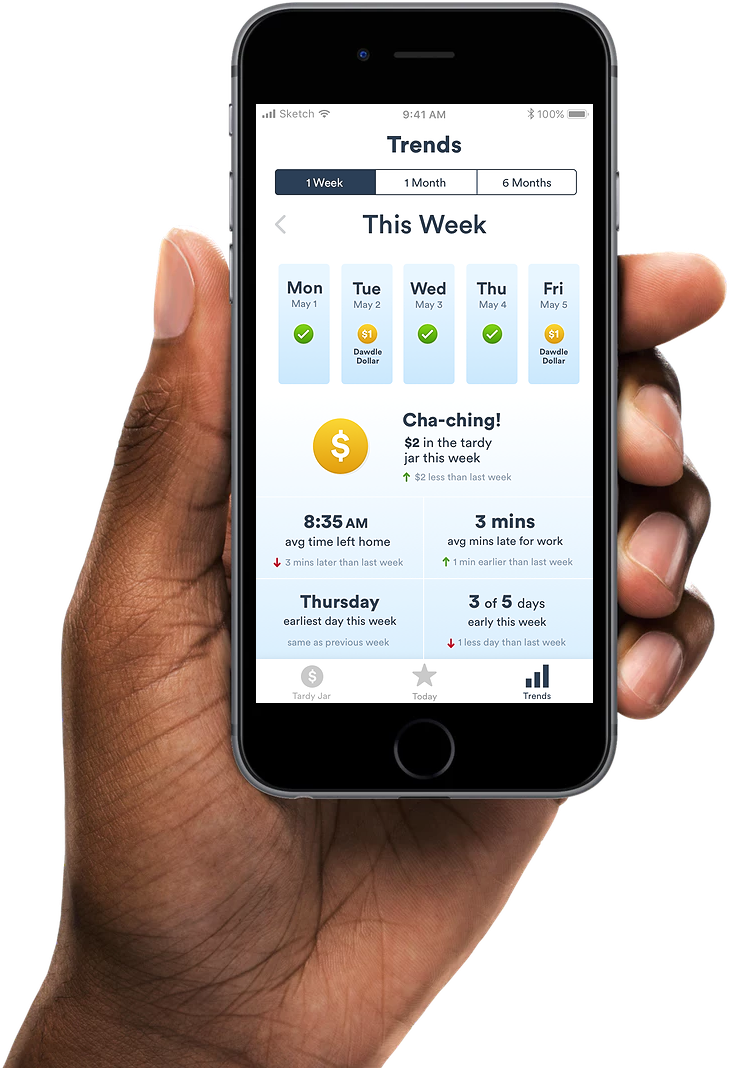Time is Money
An app to help you get to work on time.
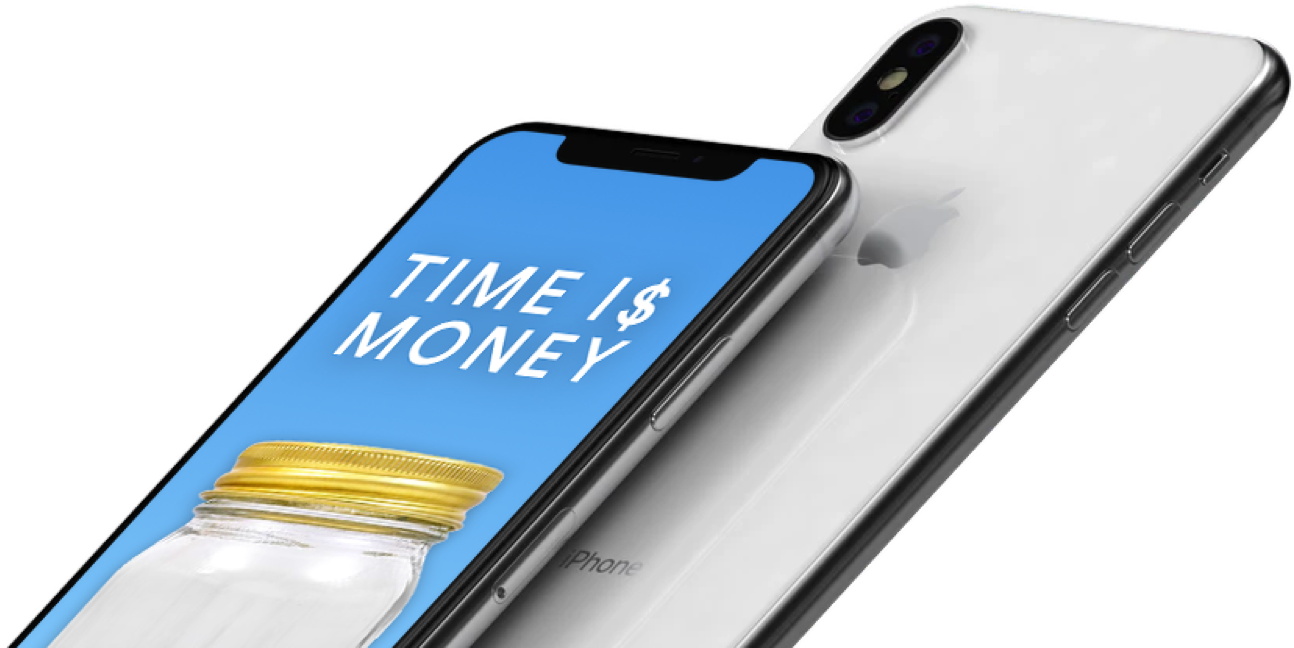
Problem: What do you hate about transit?
For the final project of my User Experience Design course at HackerYou, we were asked:
“What do you hate about transit?” The assignment was to create a mobile solution to your
favourite commuting problem.
My goal was to create an app to help chronically late people
get to work on time, but also ensure that people feel their time is spent meangingfully,
even when they’re late (again).
Research & Insights
Through user interviews and research, it became clear that being chronically late has
many consequences. Late people fear appearing lazy, hurting their relationships, showing up
ridiculously sweaty, and more.
On top of all these concerns, one of the biggest
worries chronically late people have is that they’re wasting their valuable time! An extra
ten minutes of sleep is immediately gratifying, but doesn’t feel quite as great when running
into work late and hiding from your boss’ judgmental stink eye.
Other Priorities
Sleeping in & procrastinating instead of leaving on time
Personality Traits
Optimistic people estimate minutes as longer
Stress & Anxiety
Overwhelming fears about external judgement
Wasted Time
Regret not spending time meaningfully
Tardy Jar
In Time is Money, being late has much more light-hearted consequence — a “Tardy Jar,”
which collects a “Dawdle Dollar” for each day a user is late to work. At the end of each month, the
tardy jar is donated to a charity of the user’s choice.
Micro-interactions of humour and
microcopy are used to lighten the tone of the app. These little snippets of light-hearted text are
a simple way to add moments of delight into the stressful experience of getting to work on time.
Recall is hard — particularly when users are feeling down about their lateness, reminding
users that their money is going to a good place will help create an emotional connection with users.
Even in the worst case scenario when a user is late every single workday of the month, $20 worth of
tardiness goes to charity and their time is well spent.
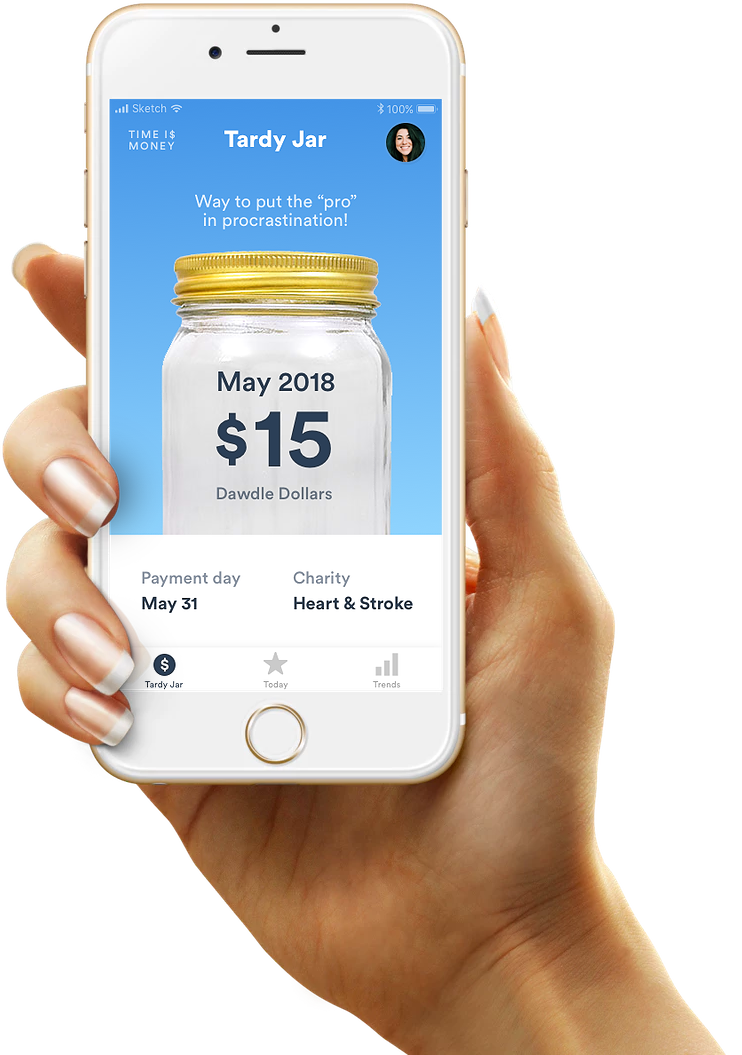
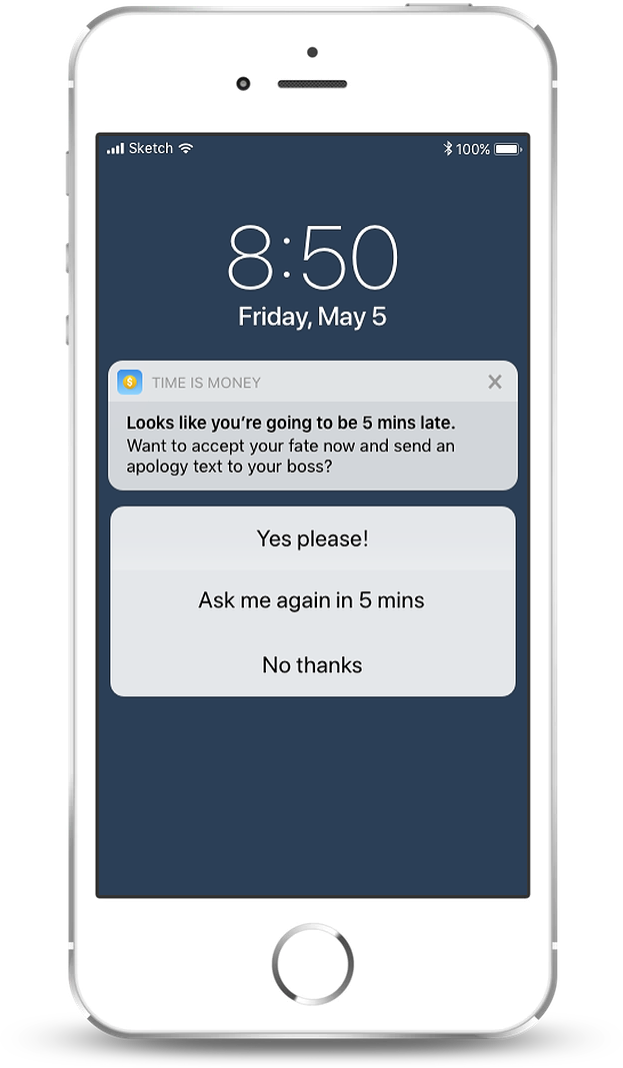
Notifications & Apology Texts
Sending playful, yet useful push notifications gives notice when it’s time to leave,
taking all guesswork out of the stressful situation. If all else fails, and their chronic
lateness prevails, the app can anticipate the user’s needs when arriving late.
Through GPS tracking, the app will notify users when they are going to be
five minutes late, and offer to send an apology text to their boss. When running late
for work, Time is Money helps its users be more proactive in maintaining their
relationships with their bosses — lessening the shame during their dash to their desk.
Getting to Work
In the app’s main flow, the information hierarchy removes the uncertainty in getting to work. With the date at the top, and a time-based message directly below (minutes left to leave, minutes until arriving at work, minutes early or late), the user does not need to think or do any mental math regarding their commute. The most important information is offered immediately, followed by the map which will update their location based on GPS.
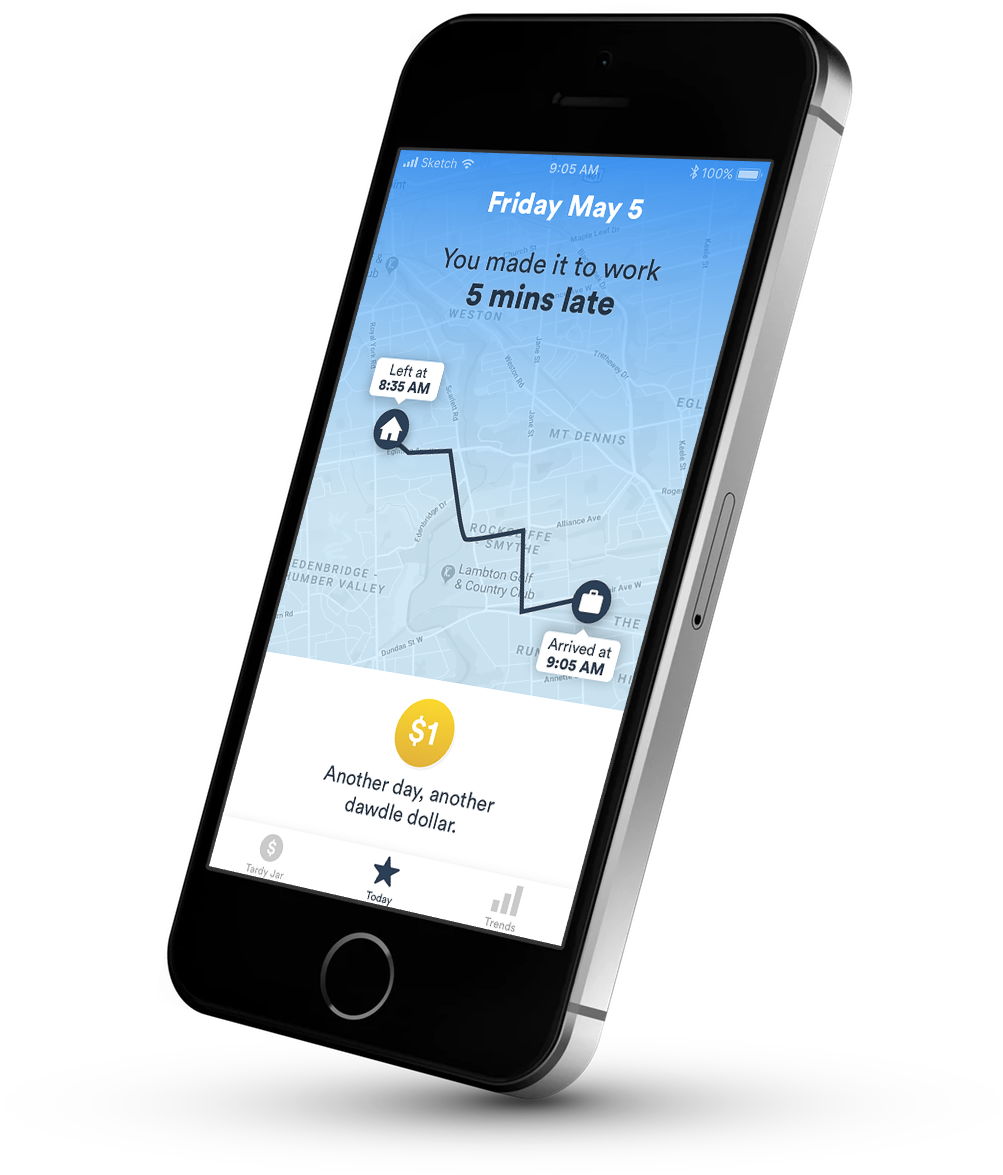
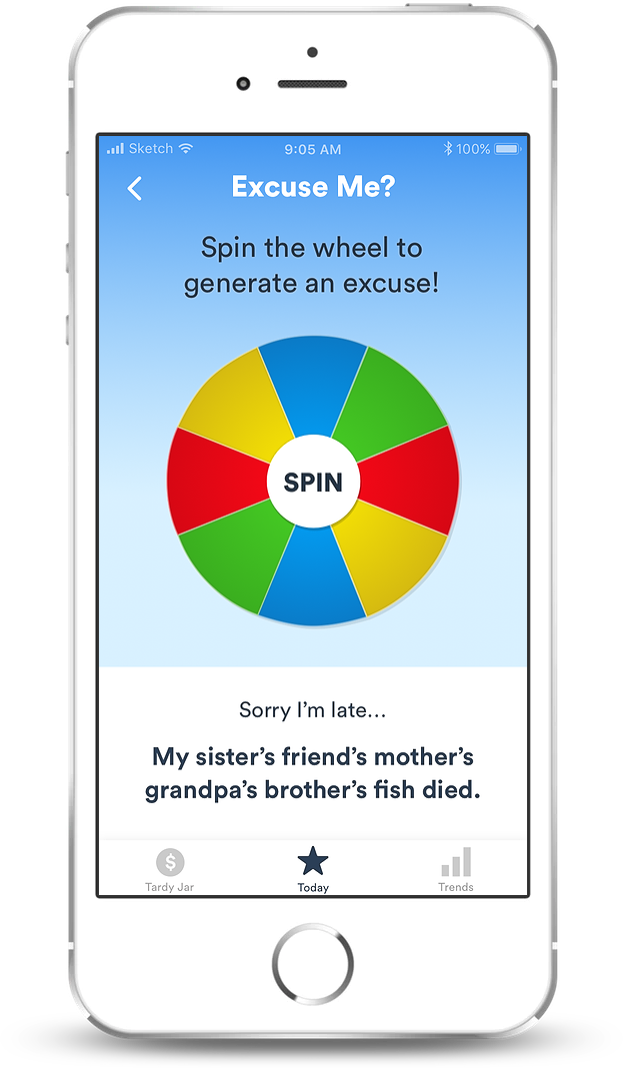
Being Wheel-y Late
After they’ve arrived at work, the user will be able to see whether or not they made it on time. If they’re late for work, a bonus feature appears that day to cheer them up: an excuse generator! Users can spin the excuse wheel to generate an excuse for that day. Although these are not intended for actual use, they emphasize a bigger picture solution, which is to laugh and continue with your day.
Trends & Insights
Time is Money challenges cognitive biases by showing detailed trends and statistics. In our hindsight bias, we are likely
to believe we are better predictors than we are. We tend to overestimate our ability to predict outcomes,
but this app helps users take an honest look at this data.
As well, comparing the current results
to the previous time frame takes advantage of our “contrast effect” cognitive bias, in which we need to
compare in order to judge value. In the future, the app could identify paths of action for the user to take
to improve their punctuality, based on the individual’s data and trends.
